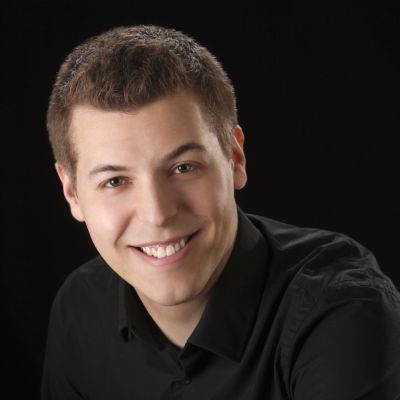
David Davis
Park Spanish Immersion Elementary School
St. Louis Park, Minnesota
David Davis, the music teacher at Park Spanish Immersion Elementary School in St. Louis Park, Minnesota, sees his students as co-learners and co-teachers, and he happily shares the teaching podium with them.
“Most of the unique aspects of my music program are student-created through highly intentional classroom facilitation and instructional design that centers student voice, choice and creativity,” he says. “By prioritizing students’ ideas, identities and cultures, I’m able to make learning intrinsically motivating and relevant. By taking this approach, the music I utilize is inevitably more culturally diverse, and students can more easily see themselves reflected in the curriculum.”
Davis believes that all students are innately musical and deserve to have a music education that is welcoming, inclusive and relevant to their lives. ”Whereas most music curricula are generally static and look the same regardless of what community they are serving, I choose to customize my music curriculum to be more organic, linked to student curiosity, and relatable to student experiences and backgrounds to better fit the ever-evolving communities I serve,” he says.
Citing constant self-learning and reflection coupled with a drive to take action toward systemic change, Davis has grown his band and orchestra program to 85% of enrollable students. Changes that supported this growth include:
- Frequently acknowledging every student for their cultural and musical brilliance regardless of their technical skills.
- Prioritizing student voice and choice, rather than a teacher-directed approach that just asks for compliance.
- Decentering the Western classical aesthetic priority by emphasizing learning by ear, improvisation, dance and other music genres equally to Western technique and notation reading.
- Reducing gatekeeping by including all instruments and genres in my curricular classes and ensembles (yes, guitars in orchestra and accordions in band!)
- Implementing student self-assessment within a co-created rubric instead of typical grading practices, so students are invested in self-evaluation and setting growth goals.
- An “opt-out” rather than “opt-in” registration model for my first-year instrumental program that ensures every student has a place, as well as an instrument they can use, in band or orchestra if they wish.
Running a program that pushes boundaries has paid off. “Through projects incorporating improvisation/composition, a diversity of music genres and contemporary electronic instruments, not only are my students excited to participate in class, but they are getting a much more well-rounded, holistically musically literate, creative, culturally aware music education than what I had,” he says.
During the pandemic remote learning environment, Davis experienced one of his proudest moments when his 3rd-grade class created an entirely original musical. “All I did was coach them, and this incredible bunch of 9-year-olds created original songs, characters, background music, art and storylines, sharing ideas and videos through virtual contexts,” he says. “The resulting Zoom musical brought so much joy to all of us during a challenging year.”








